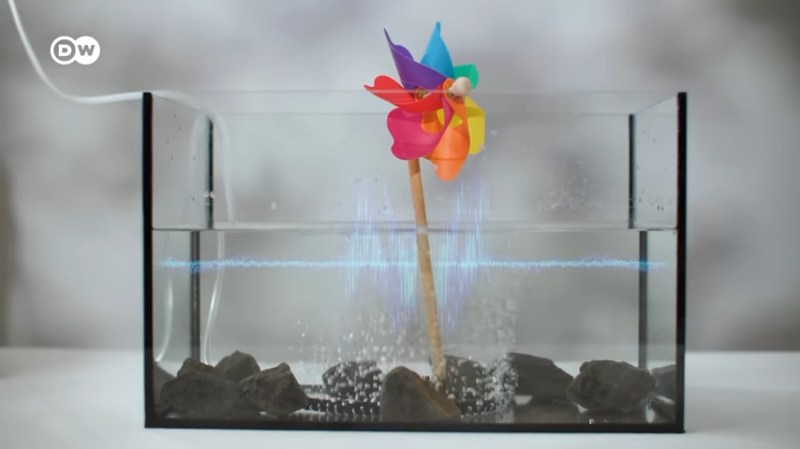Since sound is the primary sense used by most ocean life, disruptions to the natural noise levels in the ocean from human activities can be particularly problematic for marine life. [DW Planet A] has a video describing some of the ways we can mitigate these disruptions to our friends under the sea.
Being noisy neighbors isn’t just a problem for whales but for everything down to the plankton at the base of the food web. Underwater construction like offshore wind installations get flak for being noisy, but technologies like bubble curtains can reduce noise output by up to 90% to the surrounding waters while still getting those nice low carbon energy benefits that prevent further ocean acidification and warming.
Cargo ship propellers are a trickier proposition due to their mobile nature, but work by shipping company Maersk shows a simple retrofit can minimize cavitation bubbles from propellers, saving fuel and reducing sound output by 75%. While companies are unlikely to install these retrofits on their own, they could be done during a ship’s normally scheduled time in dry dock. We wonder if toroidal propellers could help here as well.
Unsurprisingly, the worst offender for this problem is the oil and gas industry. Using seismic air guns to blast sound to search for fossil fuel deposits below the seabed, these rigs can instantly kill plankton and cause disruptions at long range. Fossil majors have started investing in marine vibroseis, a more subtle vibration technique that is also useful in shallower waters than the seismic air guns. This could again reduce impacts on marine life by 90% compared to current methods. As the energy transition continues, this impact will be reduced by 100% when exploration for marine fossil fuels ends.
If bubble curtains sound familiar, you may remember their use in containing detonation of unexploded ordinance during the construction of the Nord Stream 2 Pipeline, a very different type of subsea infrastructure project. We also have something for you if you’re more interested in tracking man-made objects (subs) underwater.
















Can’t keep a pulse jet running underwater anyhow. :-(
It sucks as boat propulsion, light weight no advantage on water. Still ‘100% efficient’.
Perhaps a pulsejet powered surfboard, not going to be doing anything but making noise, but fun!
Why in a warming scenario are oceans getting more acidic, if they warm they can dissolve less CO2 so they drop in acidity.
Carbonates are basic. Less C02, less basic
Why did I think you got weak carbonic acid if you bubble CO2 or air containing it, through water?
Ah, because you do. It’s only a basic carbonate after it has reacted with some limestone or… coral :-/
Though now I want to know if aerating or CO2 carbonating runoff from montane terrain with a lot of particulate rock flour in it, is an effective way of sequestering carbon.
The search term is in the article, look up “ocean acidification”. Long story short, more CO2 in the atmosphere means more CO2 available to be dissolved in the ocean. The warmer water being slightly less prone to dissolve CO2 is not enough of an effect to offset the greater availability.
“those nice low carbon energy benefits that prevent further ocean acidification and warming” is a statement without meaning. The scientism is strong on HaD.
It could be said that wind turbines have not reduced CO2 output because the demand for energy keeps growing faster than we can add renewable power.
please stop noticing
Offshore wind power is an oddly bad and good thing for the marine environment.
A lot of marine environments do indeed not like excessive noise, for the same reasons people on land complain about noise as well.
But studies have seen that these offshore wind farms are also somewhat creating artificial reefs. That in turn provide a local ecosystem around them. And this along with the the fact that fishing vessels don’t really operate inside of wind farms makes them quite the safe harbor from humans. Similar to how the demilitarized zone in Korea is “safe” for animals despite the abundance of mines.
Now, it still a good idea to employ additional sound reducing measures. As well as perhaps strive towards making the artificial reef part more than just accidental but rather a part of the construction plan.
In the same sense as how wind turbines disrupt animal life on land, but some animals such as caribou and reindeer like them, because the clear cut areas through the forests for the turbines and the power lines and access roads become windy enough to blow irritating insects away.
Maye the U.S. could release some of it’s propulsion research for low noise propellers used on it’s subs?